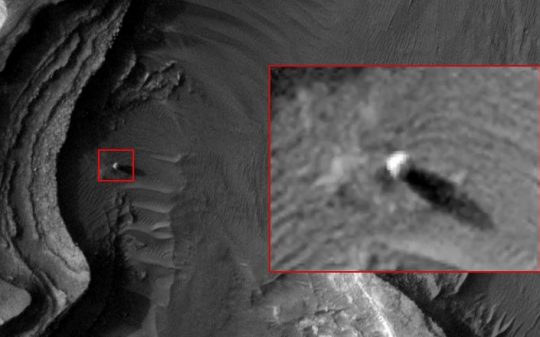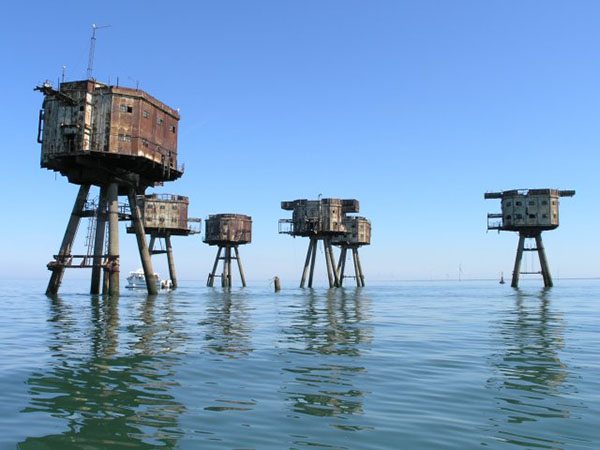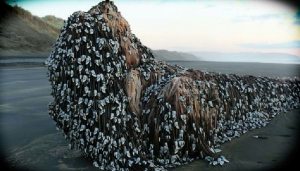An intriguing object on the martian surface has been identified in photos sent back by the Mars Reconnaissance Orbiter.
The Mars Reconnaissance Orbiter (MRO) is a $720 million spacecraft that left Earth in August 2005 and entered Mars’ orbit on March 10 the following year. In the 11+ years it’s been in service, the MRO has managed to send back thousands of incredible images, some of which might contain clues regarding the mysterious planet’s controversial past.
One of these is the image titled PSP_010329_1525. A very unassuming name for a photo that shows what appears to be a spherical, artificial structure.
PSP_010329_1525 was taken from an altitude of approximately 200 miles so the image covers a vast area known as the Uzboi Vallis. Nowadays, the Uzboi is a mostly dry valley that is sometimes peppered with seasonal ponds and small streams. Yes, on occasion, Mars still has liquid water.
In the distant past, the Uzboi valley was completely covered in water, a fact that is supported by the erosion clearly visible in the photo. So this makes it even more mind-boggling when you realize that amid all this weathering of sediment, a remarkable structure still stands tall. Take a look:
The object in the image appears spherical in form and we can estimate it measures some 200 feet across, possibly even more. Judging by the shadow it casts, the object looks like it stands higher than the surrounding area. It’s as if it were elevated on a platform or some kind of supporting stilts. Does that remind you of anything?
If water was more plentiful in the distant martian past and has since become scarce, we can reason that at some point in the not-so-distant past water was in the process of disappearing from the surface. At that point in time, water was undoubtedly a precious resource and for intelligent life to survive, it must have positioned itself close to the dwindling liquid.
The object we see in the photo was located knee-deep in one of the remaining lakes, not too far from the shore so access to dry land was facile. Since evaporation must have been an issue, we can surmise that the salinity only grew as the volume of water was decreasing, so the structure, if indeed artificial, could have been some sort of desalinization plant.
Naturally, the spherical object on Mars could be just a odd boulder photographed in a light that only makes it look unnatural but given what you know about Mars—and what you aren’t being told about Mars, this wouldn’t make for an interesting subject to discuss now, would it?
Link to NASA photo here. To the right, under the Wallpaper section, click on the 8k version for the highest resolution. Not going to direct link to that because I don’t want to turn your phone into an useless brick for the next couple of minutes.











